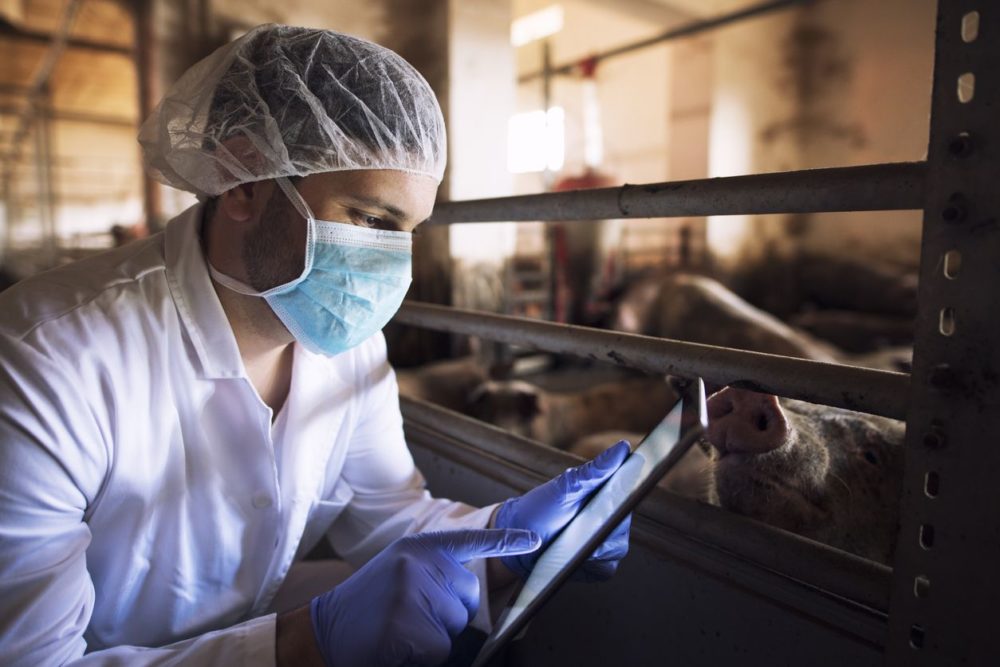Carel du Marchie Sarvaas is executive director at HealthforAnimals, a nonprofit NGO representing the global animal health industry based in Brussels, Belgium. The views expressed in this guest article marking World Zoonoses Day are the author’s own and do not necessarily represent those of AFN.
The Covid-19 pandemic has highlighted the clear dangers and difficulties in controlling a worldwide outbreak of an emerging disease.
But a new World Health Organisation (WHO) panel aiming to address the emergence and spread of other zoonotic diseases doesn’t have to look too far to find the best practices and models that can — and in many cases already do — prevent the next pandemic.
If governments and health authorities want to secure a healthy future and protection from the threat of zoonotic diseases, they need only look to the modern farms in countries like Canada, Australia, the US, and throughout Europe, where such outbreaks are increasingly rare.
The day-to-day practices, safeguards, and technologies that are now common on modern farms not only ensure food safety in these countries is the strongest in the world, but also that outbreaks of zoonoses from the food chain are prevented – or, at worst, quickly contained. It is one of the core reasons why the vast majority of zoonoses originate in wildlife, not from domesticated animals.
So much so, that in markets like North America, the EU, and the UK, the threat of zoonotic diseases spreading to people has all but disappeared in the last decade. We have improved animal health management to thank for promoting better livestock health, which has, by extension, protected the health and wellbeing of people as well.
It is down to these innovations that now exist on almost all modern farms in developed countries that there has been no major zoonotic outbreak in Europe since Q fever in the Netherlands in 2007.
As a result, the WHO’s new One Health High-Level Expert Panel already has a broad set of ready-made and tested solutions that can help the world — not just the most developed economies — minimize the threat of zoonotic disease outbreaks and ensure a healthy future for animals and humans alike.
Scaling up animal health interventions in developing countries should be an urgent priority, just like increasing access to Covid-19 vaccines – especially as the burden of neglected tropical zoonotic diseases is significantly higher.
This can be done by providing access to key technologies, practices, and policies, along with expert support.
Firstly, vaccination is the most powerful tool in our pandemic prevention toolbox and is instrumental in bringing down the risk of an outbreak.
Vaccines are essential in preventing animal diseases from spreading among animal populations and jumping to humans, with mandatory Q fever vaccination in the Netherlands helping significantly to bring the last outbreak under control.
Vaccination drives also helped to bring an end to the threat of salmonella from poultry on European farms in the 1990s, which was previously the most high-profile form of household food poisoning just some 20 years ago.
Researchers are now in the process of developing a vaccine for another zoonotic disease — Rift Valley fever — which can be given to both people and livestock.
Secondly, rigorous biosecurity measures — ranging from simple handwashing and personal protective equipment for farm workers, to more advanced air filtration systems — have played an important role in helping to reduce the risk of bacterial transmission from livestock to people, and are now commonplace on many modern farms.
The quarantine, isolation, and compartmentalization of animals has also long been standard practice for livestock farms to continue trade while controlling infection levels, well before the Covid-19 era.
Finally, modern diagnostic technologies — including cutting-edge analysis tools driven by artificial intelligence and machine learning — have helped prevent cases of illness from becoming an outbreak, an epidemic, or a pandemic, by effectively identifying and treating illnesses and diseases early, before they become uncontrollable.
Innovations in animal health, whether new technologies, policies, or practices, have all but eliminated the threat of zoonotic disease outbreaks in livestock throughout developed markets, and in the process, have become a day-to-day part of modern farming.
Farms in developed countries already possess the solutions that are proven to be effective in helping prevent the threat of zoonotic diseases jumping to human populations, ensuring strong animal-human health and food safety.
Our goal should now be to make sure this blueprint of successful technologies and practices is readily available everywhere, not just in developed countries.
Improving access to veterinarians and veterinary resources in developing countries will be crucial if we are to properly leverage these technologies and their public health benefits on a truly global scale.
The global health community cannot afford to waste any time if we want to ensure a healthier and more resilient world and prevent the next pandemic.




